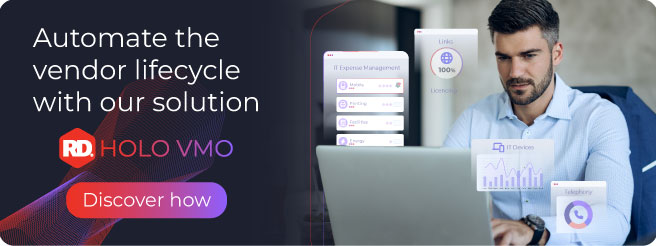Benefits of Implementing a Vendor Management Office (VMO)
Reading: 2 mins.
Vendor management is an essential part of modern business operations. As companies seek to optimize processes and reduce costs, the implementation of a Vendor Management Office (VMO) has become a crucial strategy. This includes contract negotiations, authorization, support, invoicing, purchase orders and overall general management of contract agreements with each vendor.
In this article, we’ll explore the benefits of establishing a VMO in your organization and how it can contribute to efficiency and business success.
The Importance of a VMO
Key benefits of developing a VMO area:
Enhanced Vendor Relationships. The VMO promotes coordination, collaboration, and communication with vendors. This not only strengthens business relationships but also facilitates problem-solving and joint adaptation to changes in the business environment.
Unified Purchasing and Agreement Administration. Centralizing procurement and contract management with VMO oversight ensures consistent and efficient agreement execution, avoiding duplicate efforts and ensuring adherence to agreed-upon terms.
Improved Governance. A VMO promotes governance and regulatory compliance by establishing standardized processes and clear policies. This reduces the risks associated with non-compliance and ensures greater consistency in business operations.
Dispute Resolution and Problem Solving. The VMO serves as a mediator in case of disputes between the company and its vendors. Its expertise in conflict management can help resolve issues effectively and prevent costly litigation.
Identification, Evaluation, and Mitigation of Vendor Risks. VMOs are experts in identifying, evaluating, and mitigating risks related to vendors. This includes assessing the financial stability of vendors and developing strategies to reduce potential risks.
How to Measure the Success of a VMO
To ensure your VMO is delivering value, it’s essential to measure its success. Here are some key activities to guide your evaluation:
RFP Creation Guidance. The VMO can provide templates and best practices for request for proposal (RFP) processes in business units. This ensures that RFPs are conducted efficiently and with consistent quality standards.
Structured Negotiations. The VMO can formalize negotiation processes and use performance metrics for contract renegotiations. This ensures that conditions are beneficial for the company.
Contract Improvement. The VMO plays a crucial role in reviewing and managing contracts, continually working on their improvement to align with business objectives.
Regular Relationship and Performance Evaluation. Business managers should see improvements in quality and cost reduction as direct results of the VMO’s work.
Continuous Feedback. Collecting feedback from stakeholders regularly is a key practice for evaluating internal satisfaction with the vendor management process.
7 Essential Vendor Management Elements
Effective vendor management is based on seven essential elements:
- Strategic Procurement View: Understanding how procurement relates to the company’s strategic objectives.
- Vendor Management Strategy: Developing a robust strategy for selecting, managing, and collaborating with vendors.
- VMO: Clearly defining the responsibilities and scope of the VMO.
- Vendor Business Plan: Setting clear expectations with vendors regarding goals and outcomes.
- Shared Performance Metrics: Measuring and evaluating performance for both the company and vendors.
- Critical Success Factors: Identifying key factors that lead to success in vendor management.
- Core Competencies: Ensuring that vendor management teams have the necessary skills and knowledge.
The implementation of a VMO can offer a range of benefits, from improving vendor relationships to efficient contract management and risk mitigation. By measuring VMO success and focusing on essential vendor management elements, companies can optimize their operations and strengthen their position in the market.







